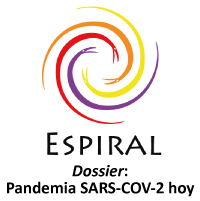Covid-19 and Peru. Effects of compulsory social isolation on foreign immigrants
DOI:
https://doi.org/10.15381/espiral.v2i4.19531Keywords:
Isolation / confinement, immigrants, health, capitalism, digitizationAbstract
The world is on alert and economies are on pause as a result of the protective effects against Sars-CoV-2, which has emerged as a new type of coronavirus called Covid-19, and is considered by the World Health Organization (WHO) to be a pandemic. The effects are absolute, but even more so on two aspects that should be highlighted: the impact on public health systems and the impact on economies around the world. During the months of January to July (2020), innumerable documents (news, articles, essays, reports, etc.) have been produced and have given us important updates of the virus’ impact in different aspects. This impact has been analysed from journalistic, academic, political, economic and medical approaches. For this reason, we are interested in approaching the impact of the pandemic in a different way; from the problem posed in the title of this document: the effects of obligatory social isolation on foreign immigrants and from the identification of the cause of the cause (construction of the problematic situation: six levels, from bottom to top), all followed by the description of the problematic situation (six levels, from top to bottom). Thus, this paper is organized taking into account the following: analysis of the world situation, financial market panic, public health, national emergency in Peru, the reorganization (digitalization) of social life, and the effect of compulsory social isolation as part of the restrictive policies implemented in Peru to fight the expansion of Covid-19 on the foreign immigrant population settled throughout the country.

Downloads
Published
Issue
Section
License
Copyright (c) 2021 Ivonne Teresa Valencia León

This work is licensed under a Creative Commons Attribution-NonCommercial-ShareAlike 4.0 International License.
LOS AUTORES RETIENEN SUS DERECHOS:
a. Los autores retienen sus derechos de marca y patente, y también sobre cualquier proceso o procedimiento descrito en el artículo.
b. Los autores retienen el derecho de compartir, copiar, distribuir, ejecutar y comunicar públicamente el artículo publicado en la revista Espiral (por ejemplo, colocarlo en un repositorio institucional o publicarlo en un libro), con un reconocimiento de su publicación inicial en la revista Espiral.
c. Los autores retienen el derecho a hacer una posterior publicación de su trabajo, de utilizar el artículo o cualquier parte de aquel (por ejemplo: una compilación de sus trabajos, notas para conferencias, tesis, o para un libro), siempre que indiquen la fuente de publicación (autores del trabajo, revista, volumen, número y fecha).





